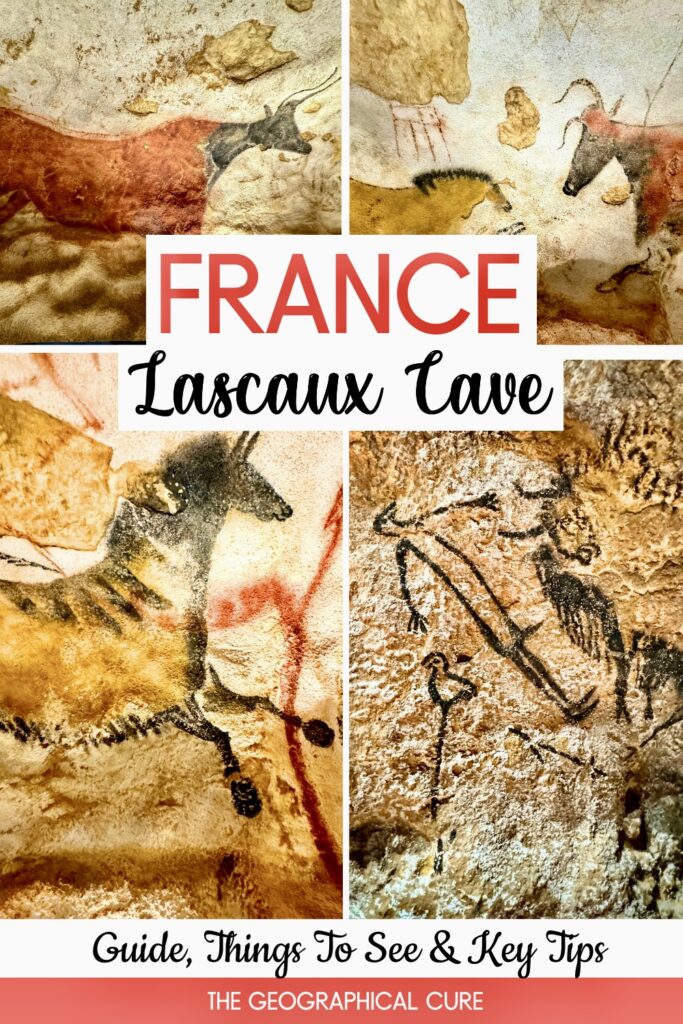Lascaux is the world’s most important painted cave. Discovered in 1940, it’s dubbed the “Sistine Chapel of Prehistory.”
The cave paintings date back to around 18,000 B.C., offering a fascinating glimpse into Paleolithic life from 21,000 years ago. They effectively serve as an ancient wildlife encyclopedia.
To understand its age, consider that the Great Pyramid at Giza is 4,600 years old and the Parthenon sculptures are 2,650 years old.
To protect these precious paintings, the original cave has been closed to the public for decades. Instead, you can visit the Lascaux IV Museum in France’s Dordogne region.
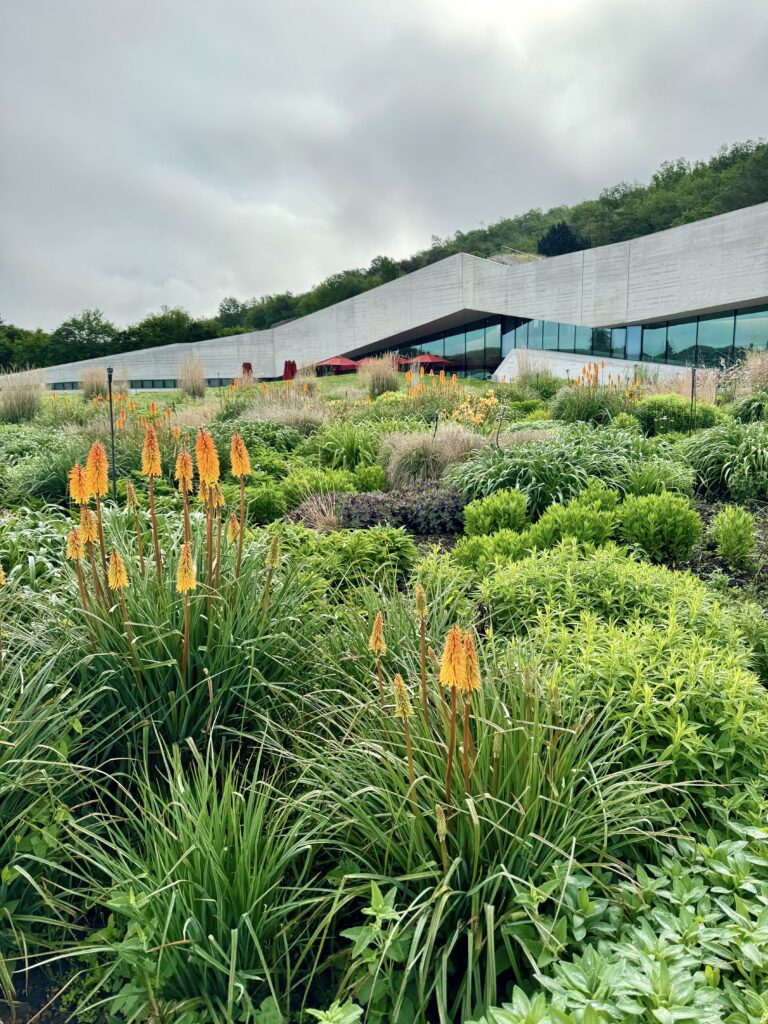
The museum meticulously recreates the cave and its incredible paintings, letting you experience these ancient masterpieces up close.
Though Paleolithic people were hunters and foragers, you’ll see that they could apparently paint like Leonardo da Vinci.
Initially, people were skeptical about the “fake cave” and thought it might be gimmicky.
But in my view, for a replica museum, Lascaux IV really hits it out of the park in terms of museum presentation and experience. It’s more expert forgery, than mere copy.
In this guide to Lascaux IV, I’ll cover everything to see and provide essential tips for visiting.
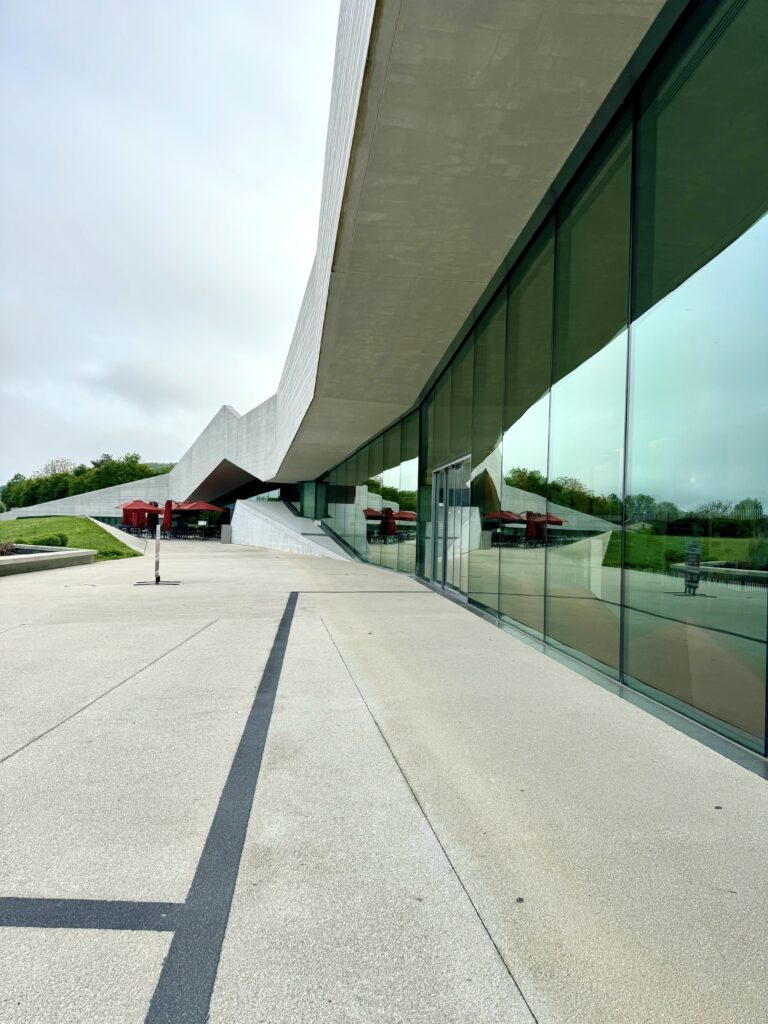
Quick Tips:
- You can only visit Lascaux IV on a guided tour.
- There are only 3 English tours each day.
- You’ll want to pre-book a ticket weeks or months in advance, especially in high season.
- You’ll have to check all backpacks.
- You can explore 6 rooms in the cave, the museum, and a theater.
- No photos are allowed in the replica cave, but they are permitted in the museum.
- Lascaux became a UNESCO site in 1979.
Mini History & Overview of Lascaux
Discovery of the Paintings
Lascaux I was discovered by chance in 1940 by a teenage boy walking his dog. He found a suspicious hole in the ground and brought his friends to explore it, hoping to find buried treasure.
Instead of gold, they found something just as valuable: prehistoric paintings. They recognized their significance straight away because similar painted caves had been discovered in the area.
The entrance to the cave had collapsed, leaving just a hole. This event, however, helped preserve the cave paintings.
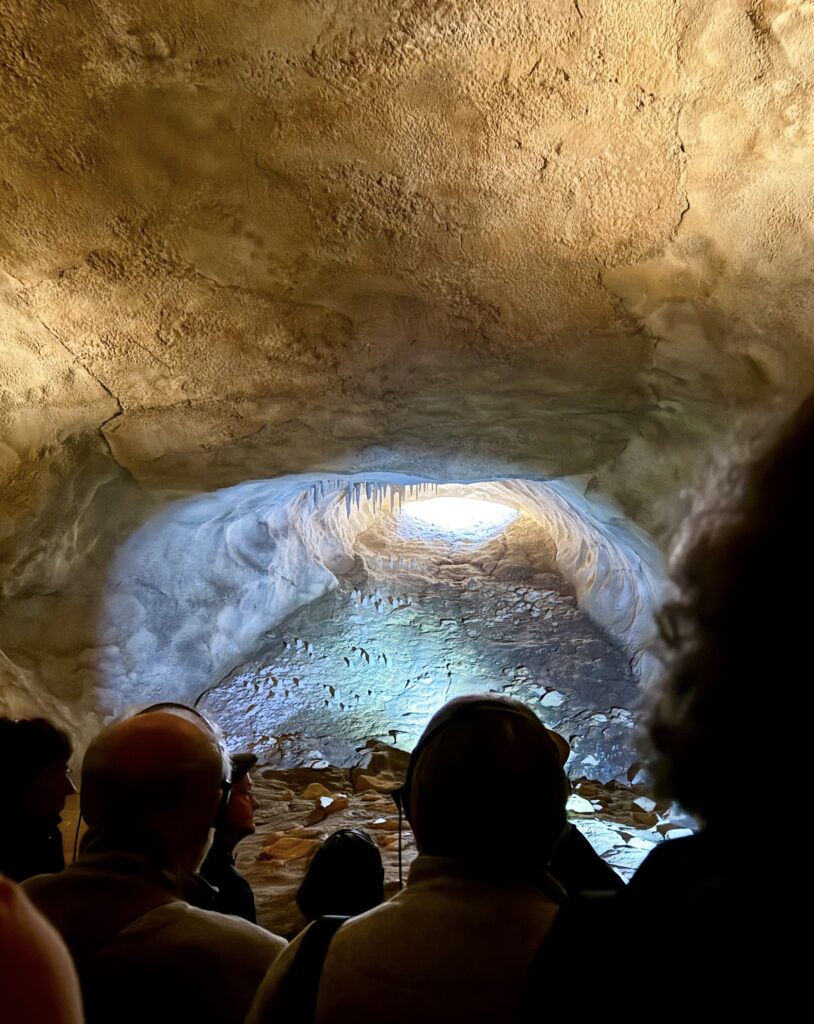
The cave was never a home. Lighting a fire inside would have suffocated the Cro-Magnon people.
They lived during the Ice Age, facing harsh conditions and large predators. They made fires just outside cave entrances or built shelters from stone or animal hides.
Their paintings are a mix of realism and imagination, with some images overlapping. These vibrant artworks are full of color and movement. Picasso, after visiting Lascaux, said, “We have invented nothing.”
To create these paintings, artists used scaffolding to reach the walls. They worked with charcoal and ochre in shades of brown, red, yellow, and white, applying the colors by spraying, brushing, or drawing with tools made from bones or reeds.
Scientists aren’t sure how many artists worked on the cave. But they’ve identified 10 different sets of handprints.
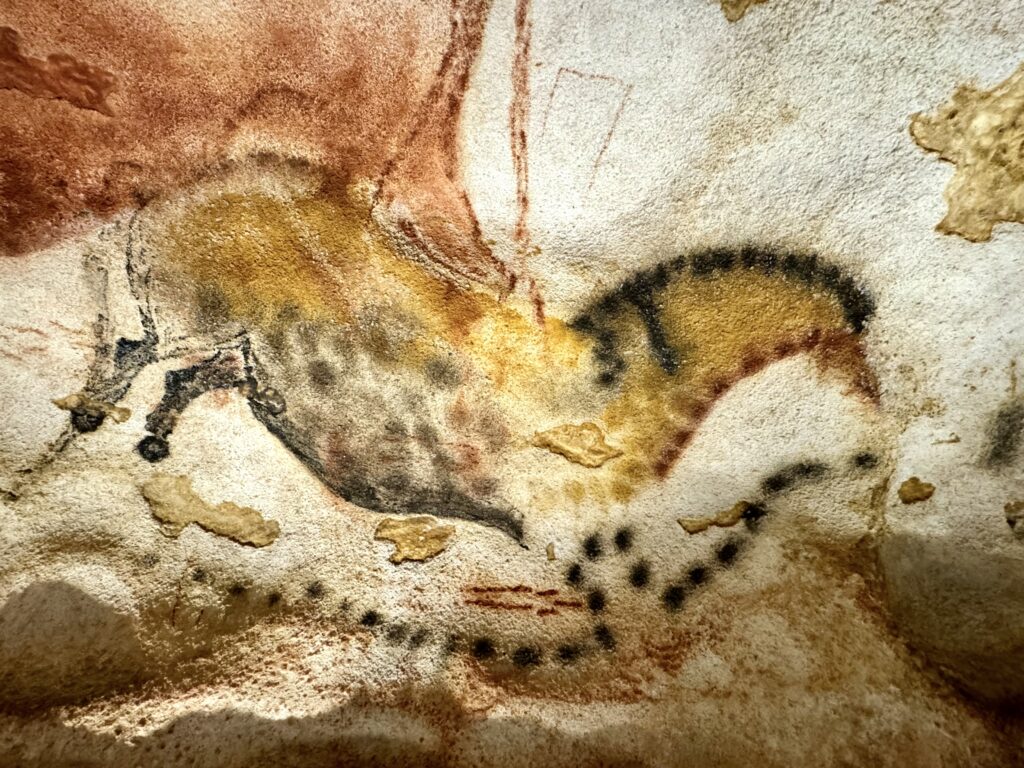
Caves Open to the Public
The caves opened to the public in 1948, attracting millions of visitors.
The walls are covered with over 900 images of animals like aurochs, horses, and deer. There’s even images of a rhino, unicorn, and a human figure.
However, the influx of visitors introduced carbon dioxide, heat, humidity, and contaminants. That lead to the growth of mold and bacteria, which threatened the cave’s delicate microclimate. This began to damage the paintings.
In 1963, officials closed Lascaux to the public to prevent further deterioration.
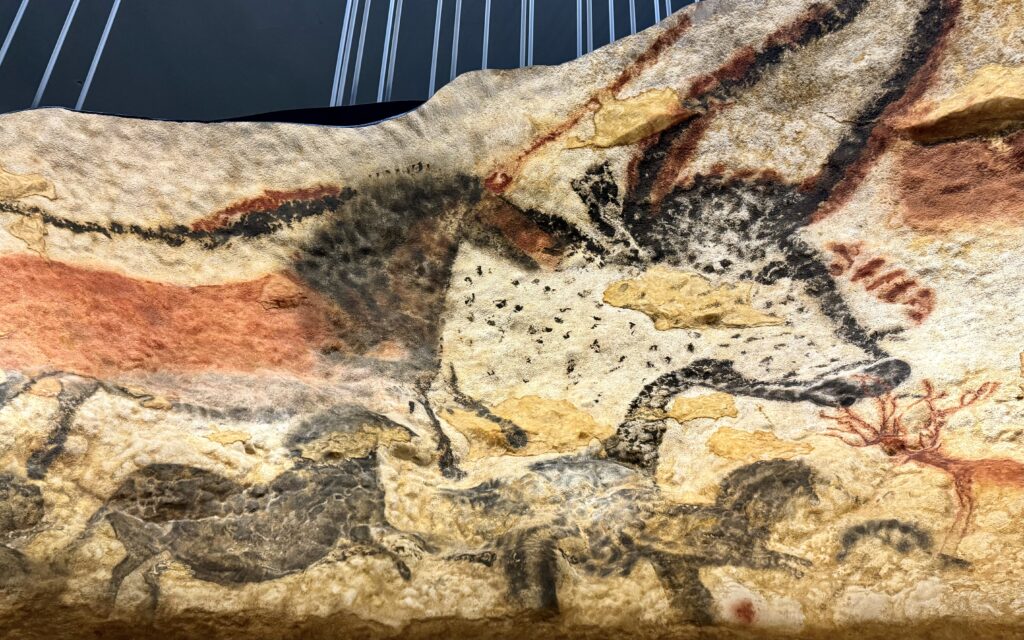
Since then, only a few scientific experts are allowed limited access to monitor and stabilize the cave’s environment. Despite their efforts, bacteria remain a threat to the paintings.
To let the public see the artworks, Lascaux II was created in 1983, replicating the first two rooms of the cave.
Lascaux III was also created. It’s a traveling international exhibit with pieces of the replica cave and artifacts.
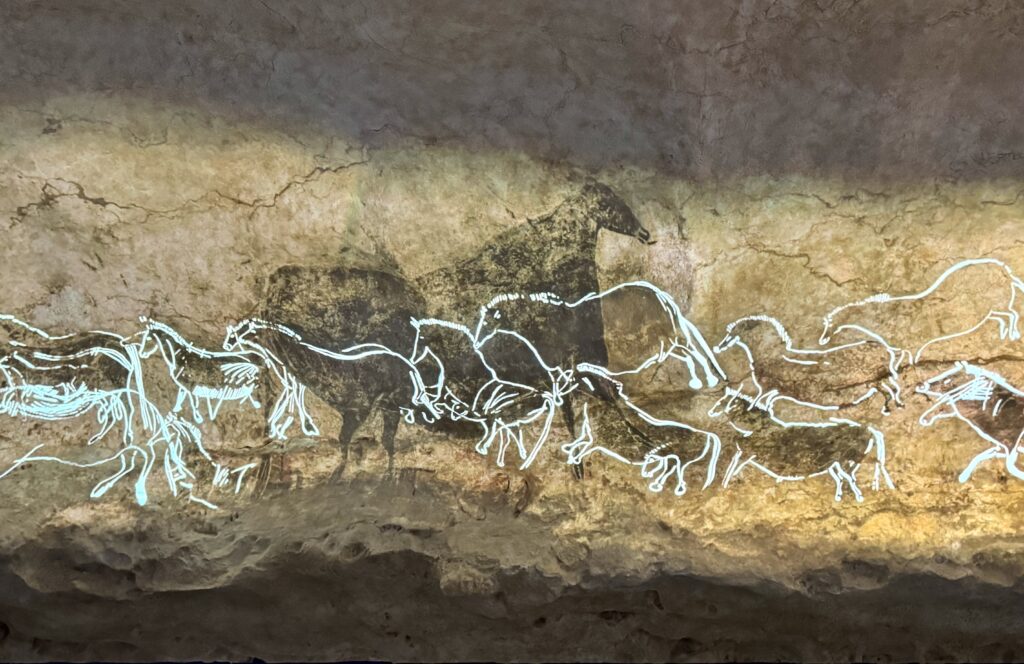
Creation of Lascaux IV
In 2016, Lascaux IV opened to the public as both a replica cave and a museum, officially called the International Centre for Cave Art.
Lascaux IV faithfully reproduces 90% of the original cave, making it hard for visitors to spot any differences.
Scientists used 3D laser scanning to create an accurate shell for the entire cave. The replicas were made in pieces and then assembled in this shell. Thirty-six artists painstakingly recreated the paintings using the same pigments as the Cro-Magnon people.
The museum is housed in a bold concrete and glass structure, located near the original cave at the edge of a forest.
To enhance the experience, the replica cave replicates the temperature, air pressure, and humidity of the original cave. Visitors can even hear their voices echo, just like in the real cave.
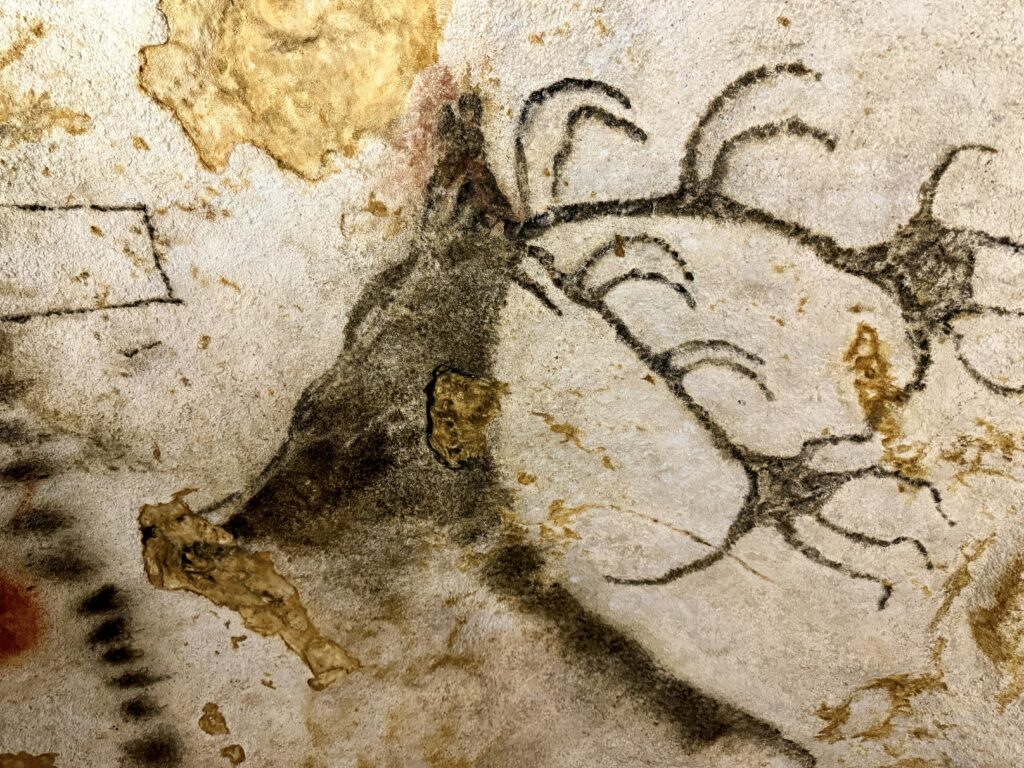
What Do the Paintings Mean?
Why were the paintings created? Their exact meaning remains a mystery.
Many researchers think they had ritualistic or religious purposes, possibly related to fertility or shamanistic practices.
Others believe the paintings were part of “hunting magic,” intended to ensure a successful hunt.
By creating images of their prey, they hoped to gain power over it. In those days, capturing prey was crucial for survival.
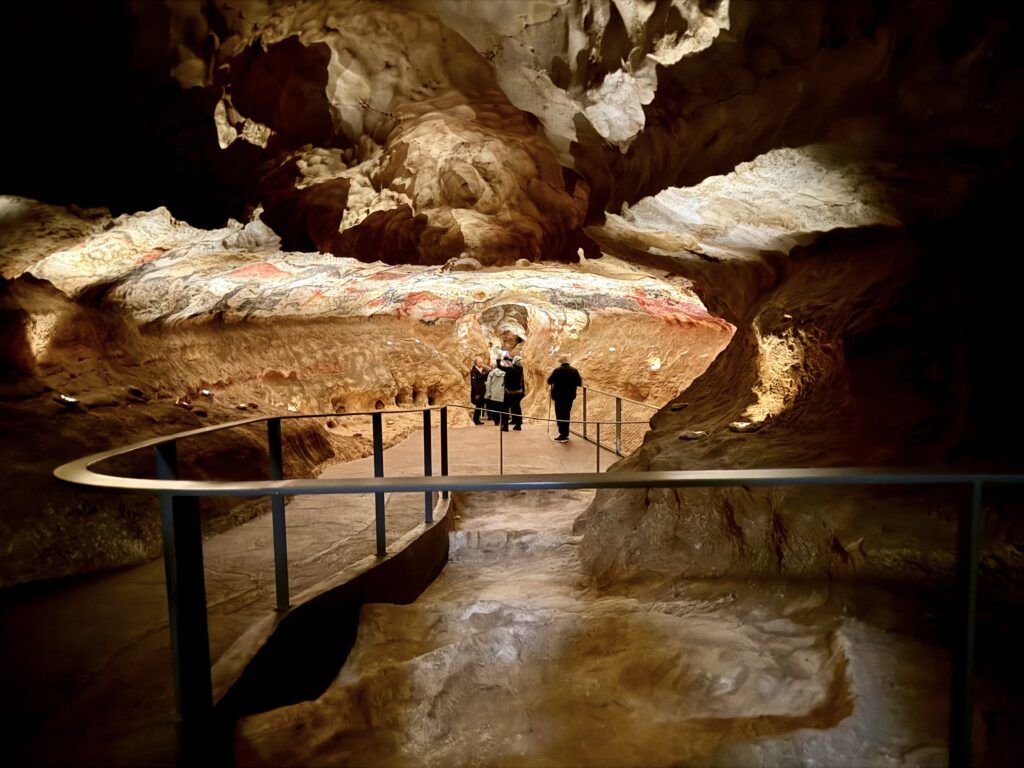
Guide To Lascaux: Things To See
Replica Cave
You begin your visit with a short film in the digital center. You’ll be transported back to the Ice Age with a tundra landscape and wild animals.
You’ll see the most dangerous predator, the cave lion, Panthera spelaea. And Cro-magnon men preparing pigments and tallow lamps to begin painting the cave walls.
Then, you reenter the building through a sliding door and are suddenly inside the cave.
There are two rules: (1) no photos and (2) don’t speak, just whisper.
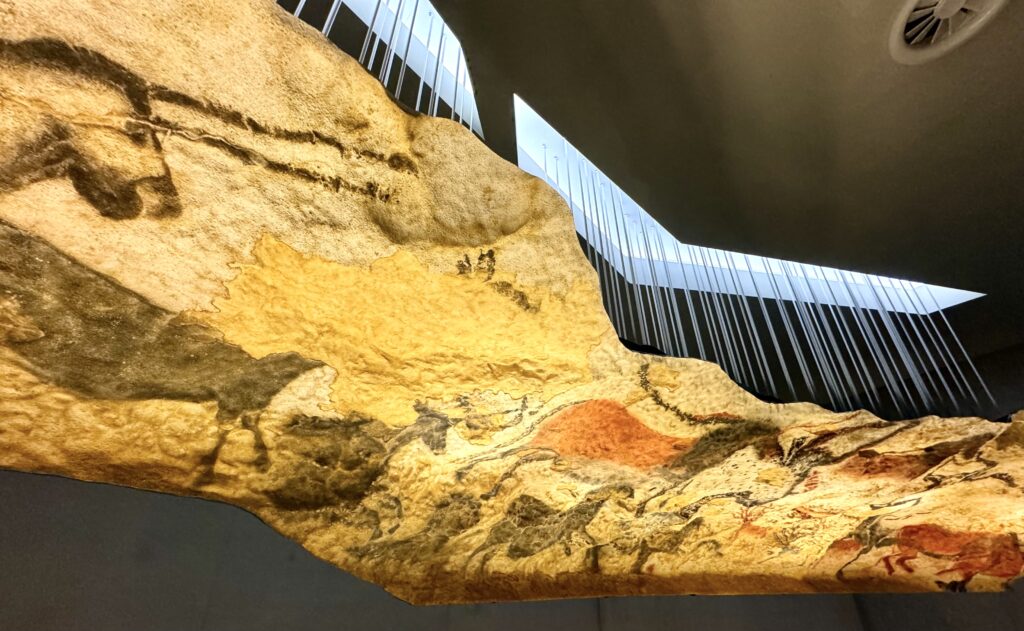
Hall of the Bulls
The first room you enter is the Hall of Bulls, the cave’s most famous room.
It’s a large gallery measuring approximately 65+ feet in length and 16+ feet in width, with a ceiling height of over 16 feet.
The hall contains 130 vibrant, large scale images of aurochs, horses, and bulls. You’ll also see the only bear in the cave and a unicorn.
One of the images, of a bull, is the largest known prehistoric representation of an animal. It’s massive.
The aurochs, a large wild cattle, are the largest, an artistic choice. The horses all have big round bellies and short legs. Another example of artistic license or were they pregnant?
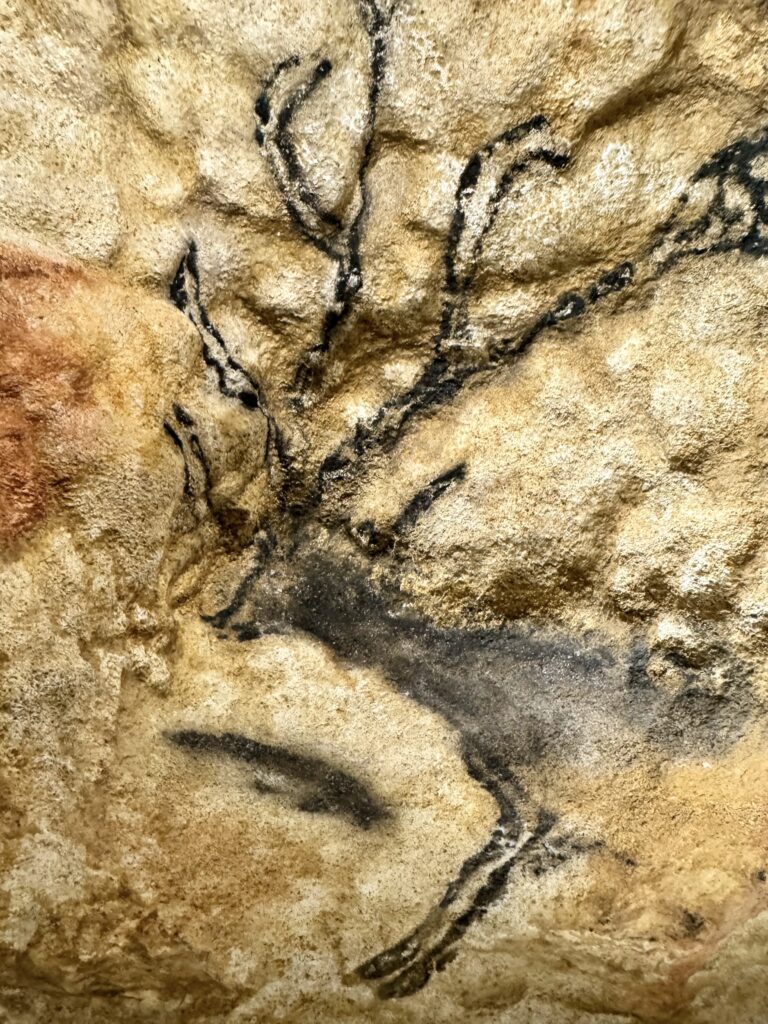
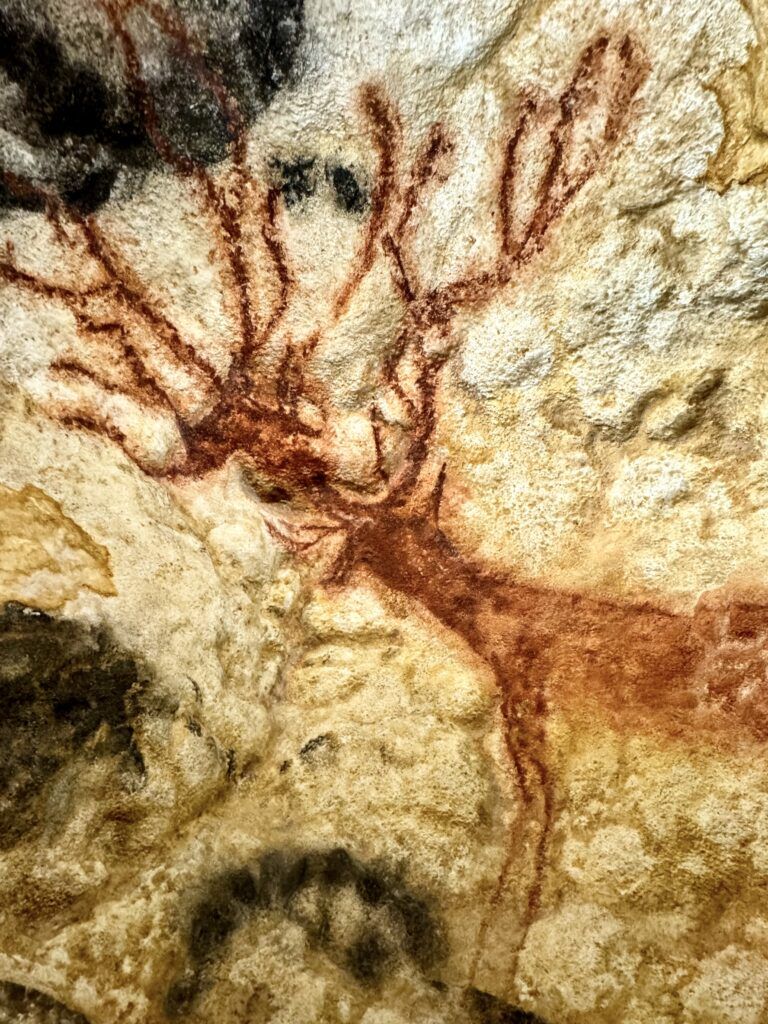

Axial Gallery
The next room is a 30 foot long passageway with bright orange and red animals.
There’s a line of small horses merrily cantering, more horses and bulls, and even two ibexes. Above you is a colorful ceiling of red bulls.
This room is also home to the Great Black Bull.
At the end of the corridor, in a section called the Meander, you’ll see a painting of an upside down horse and an imaginary image of a unicorn with two horns.
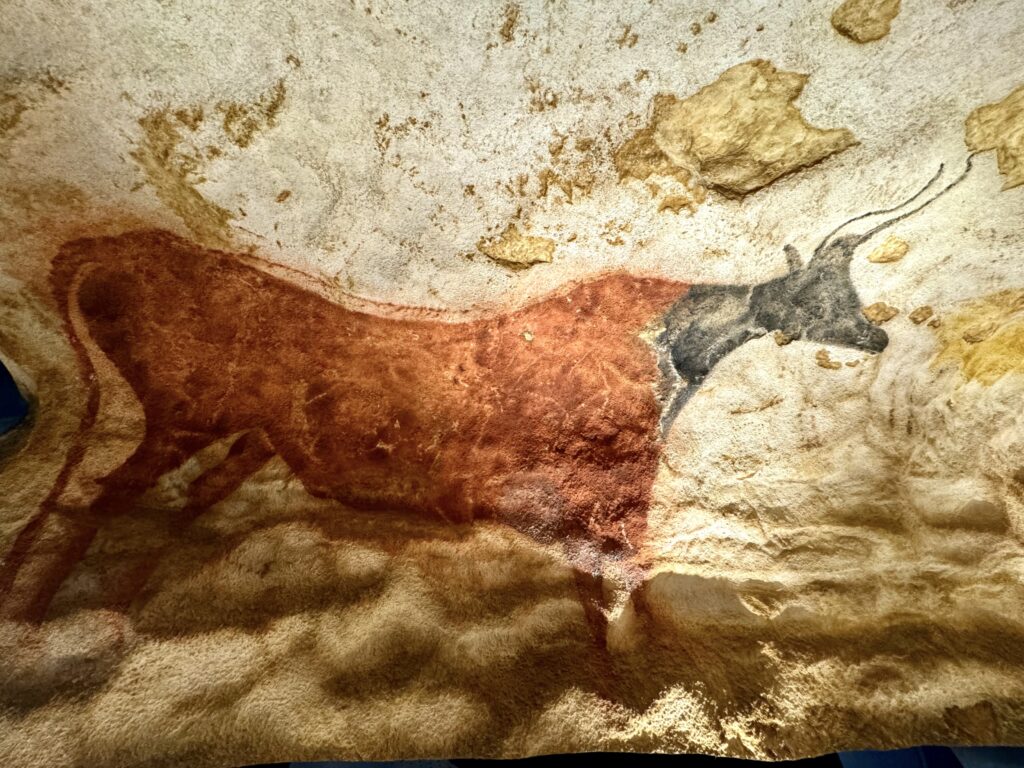


The animals are all shown in movement.
The artists used the contours of the cave to give depth and perspective to the animals and to help portray them in motion. It’s quite amazing and sophisticated.
There are also dots and crosses near the animals. What do they mean? Are they a kind of code?
Scientists aren’t sure. But they have some connection to the animals.
My guide posited that it was perhaps a way of communicating what was happening to the animals.
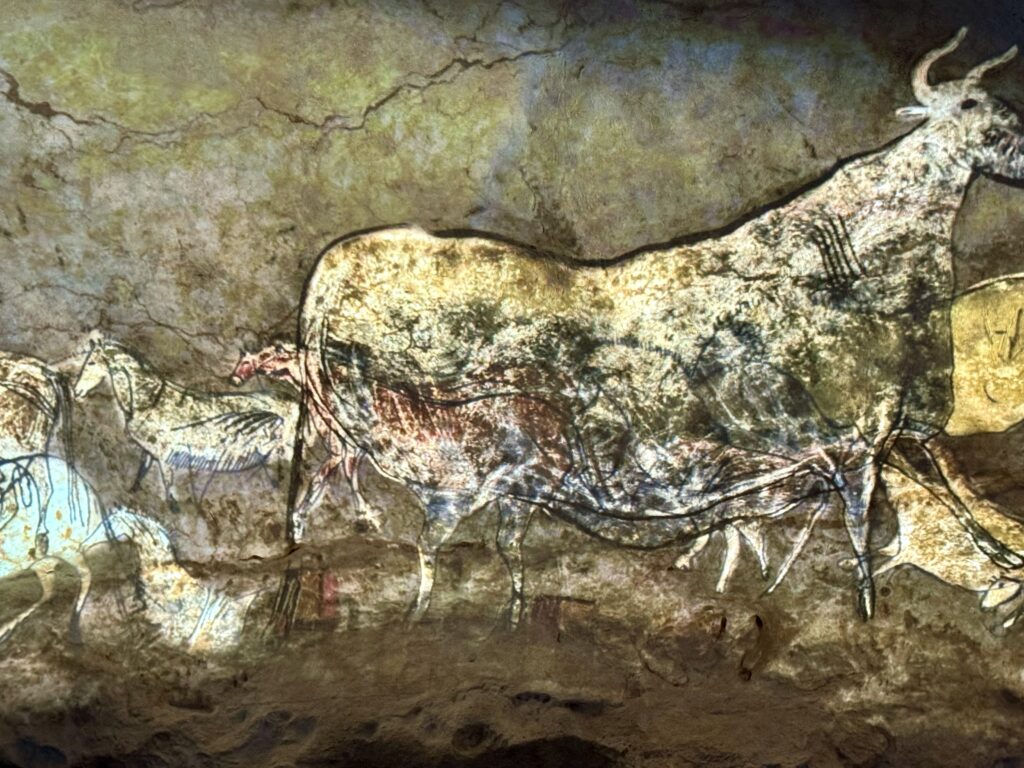
Passageway
Next, you enter a passageway that starts the second half of the cave. It connects the Hall of the Bulls to the Apse and the Nave.
This area isn’t as well preserved as the preceding rooms. The ceiling is limestone, which is not as good as calcite for preserving paintings.
So the paintings aren’t as colorful. But you can still make out the engravings the artists carved.
They aren’t easy to spot. But your guide will show them to you with a laser pointer.
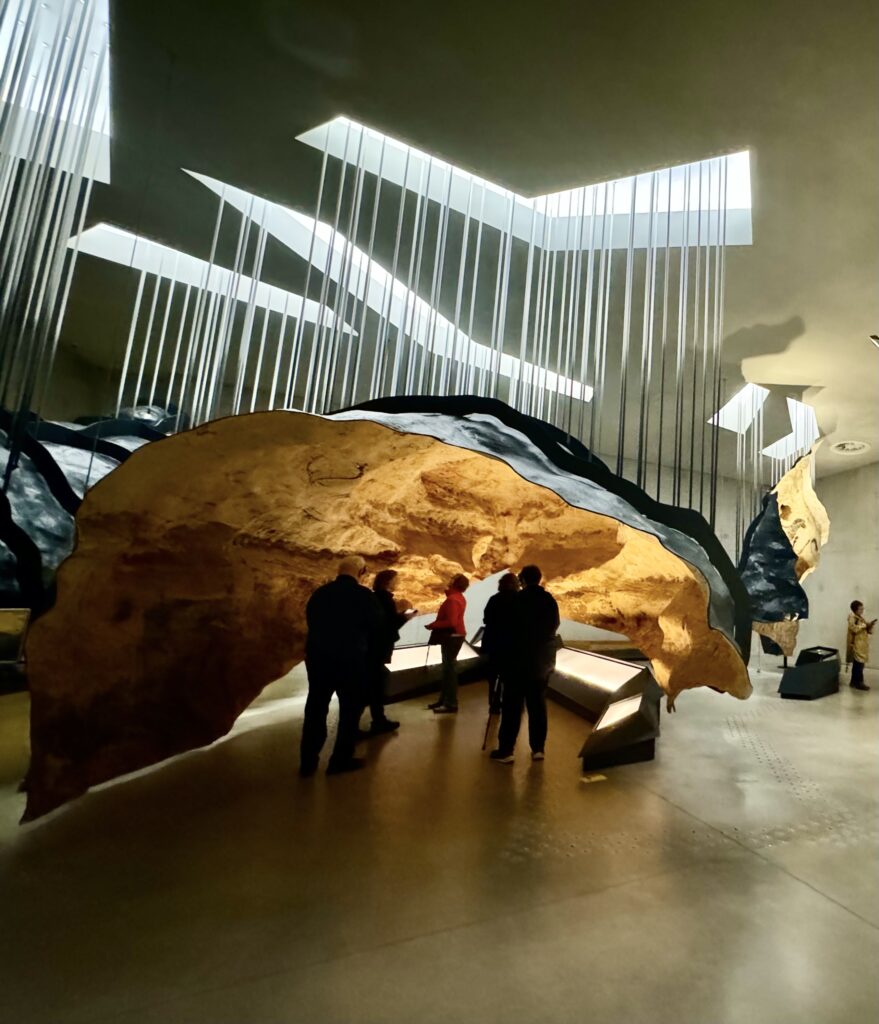
Apse
The Apse is known for the density of its artworks, containing over 50% of the cave’s art.
It features 1,200 engravings on a dome-shaped oval ceiling. Some are overlapping.
The images paintings depict the Major Stag – the largest petroglyph at Lascaux – several large black aurochs, the Stag with Thirteen Arrows, the Panel of the Musk Ox, the Frieze of the Painted and Engraved Stags, and the Great Sorcerer.
Archaeologists found several ceremonial artifacts there.
Hence, some researchers believe the Apse had a ritualistic or ceremonial function. It may have been a central sacred space where important rites were conducted.
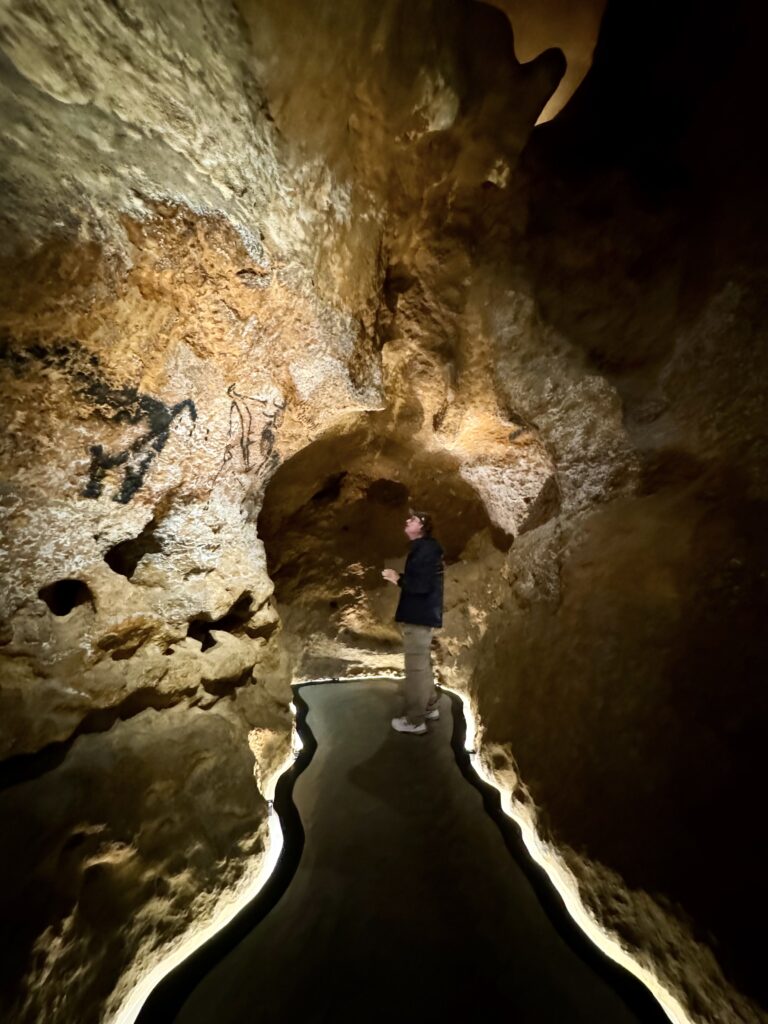

Shaft of the Dead Man
In the next space, you’ll find “the shaft,” a deep hole with paintings at the bottom.
The shaft contains the cave’s most mysterious painting. It’s possibly a hunting scene, showing a bison, a bird, a woolly mammoth, and a human.
This is the only image of a human in the cave. The human figure appears to be falling or lying down with outstretched arms and a bird-like head.
Another bird sits on a stick, and the bison is shown in a dynamic pose, either charging or wounded, with its entrails spilling out.
Why was this painted in a hole accessible only by rope? Were the prehistoric people trying to hide it?
Was access to the shaft restricted to certain people? Did the hole have symbolic meaning?
The true reason remains unknown.
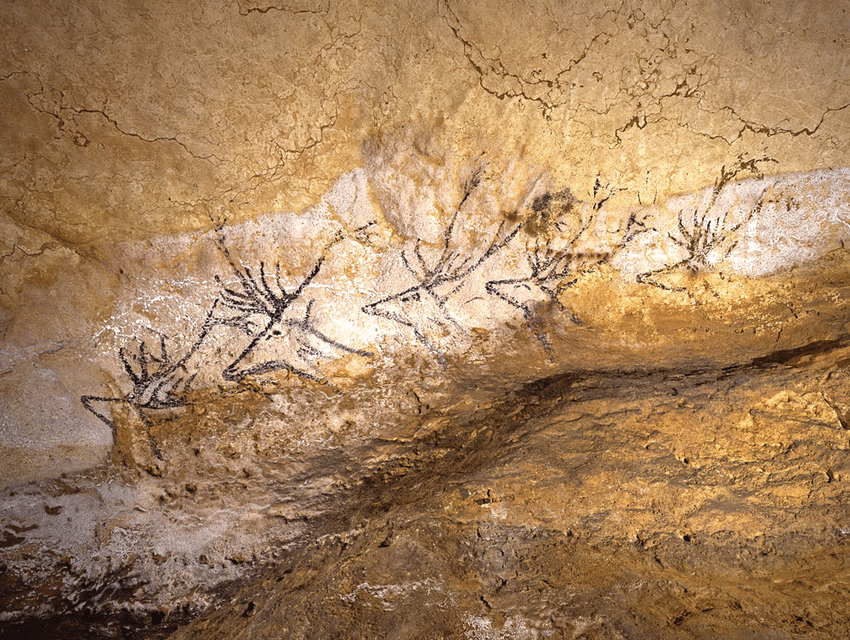
Nave
The nave contains even more animal paintings. This time, you see them painted and engraved next to colored squares and rectangles.
The geometric shapes may be a code, a method of communication, or part of a shamanistic ritual. It’s unclear what they mean.
On the right side is one of the cave’s most beautiful paintings, the Frieze of the Small Stags.
It depicts five deer crossing a river. They are shown with slender bodies, elongated legs, and detailed antlers.
The contours of the cave look like a wave in motion, creating an imaginary landscape. The deer are beautiful. In one of them, a bulge in the cave’s rock face creates a cheek bone.
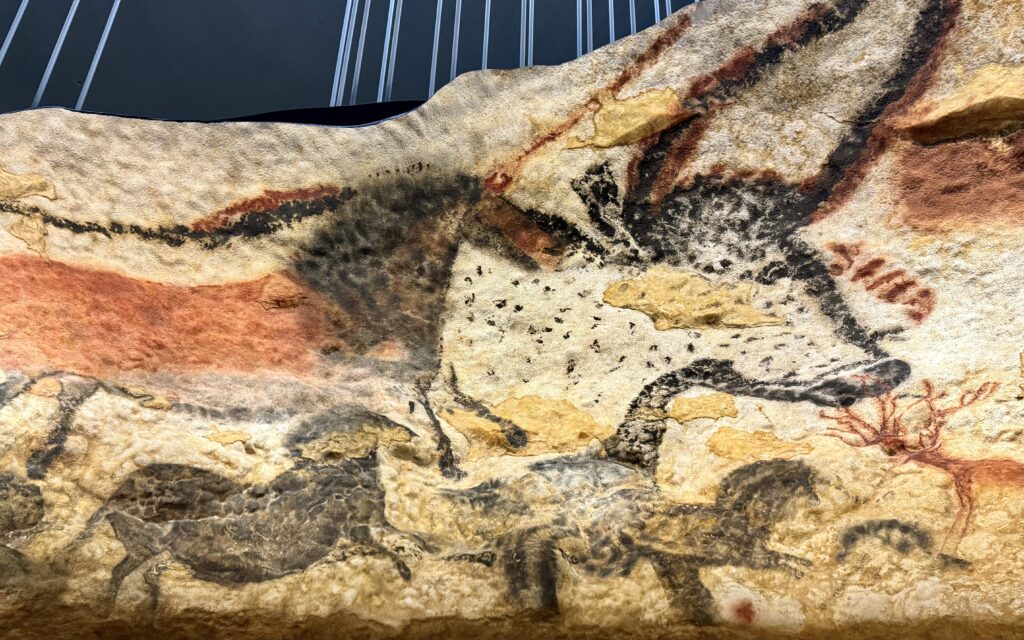
Museum
After exiting the cave, you enter a museum-style exhibition hall. This is where you can take photos to your heart’s content.
The museum is very high tech. You’ll pick up a tablet that will give you more information on the paintings.
It’s not terribly easy to use FYI.
When you approach a new exhibit, you will hear a buzzing noise. That means you should touch the earphone icon on the upper right to re-start the explanation.
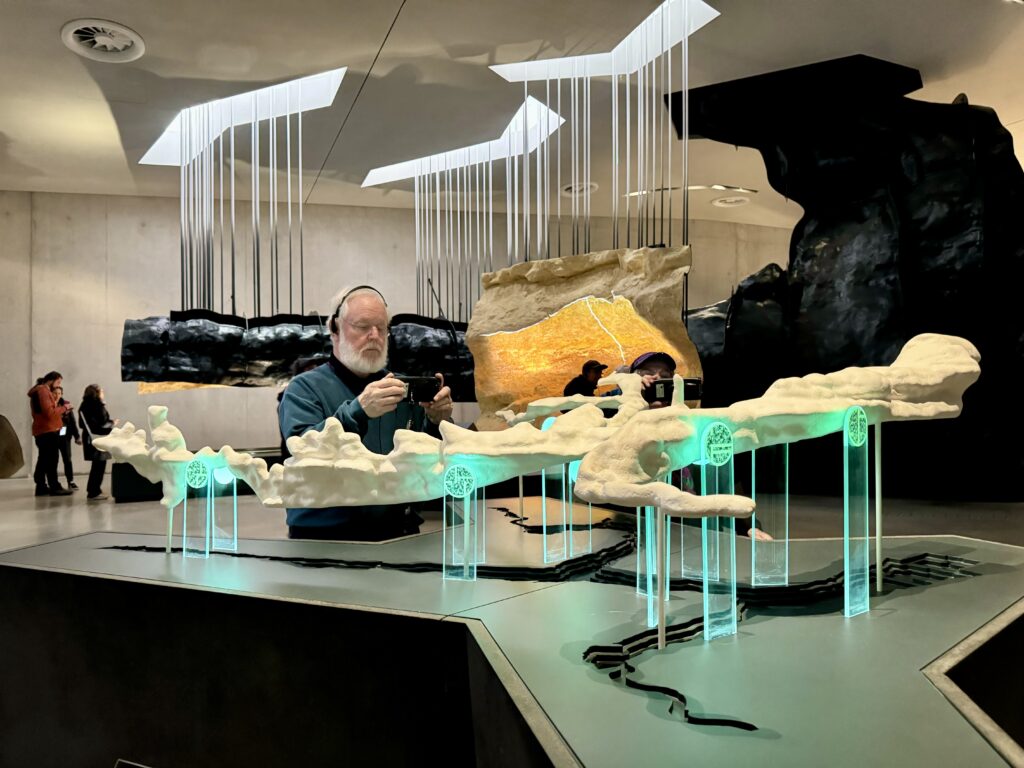
You’ll see replicas of important paintings from the cave, suspended from the ceiling.
Exhibits show how the paintings were engraved and then painted. At some interactive stations, you can try your hand at making your own cave paintings.
There are also several artifacts on display. You can see examples of the pigments and stone tools used to create the paintings.
Theater
There’s also an onsite theater. It shows a 20 minute video about the history of Lascaux and other painted caves around the world.
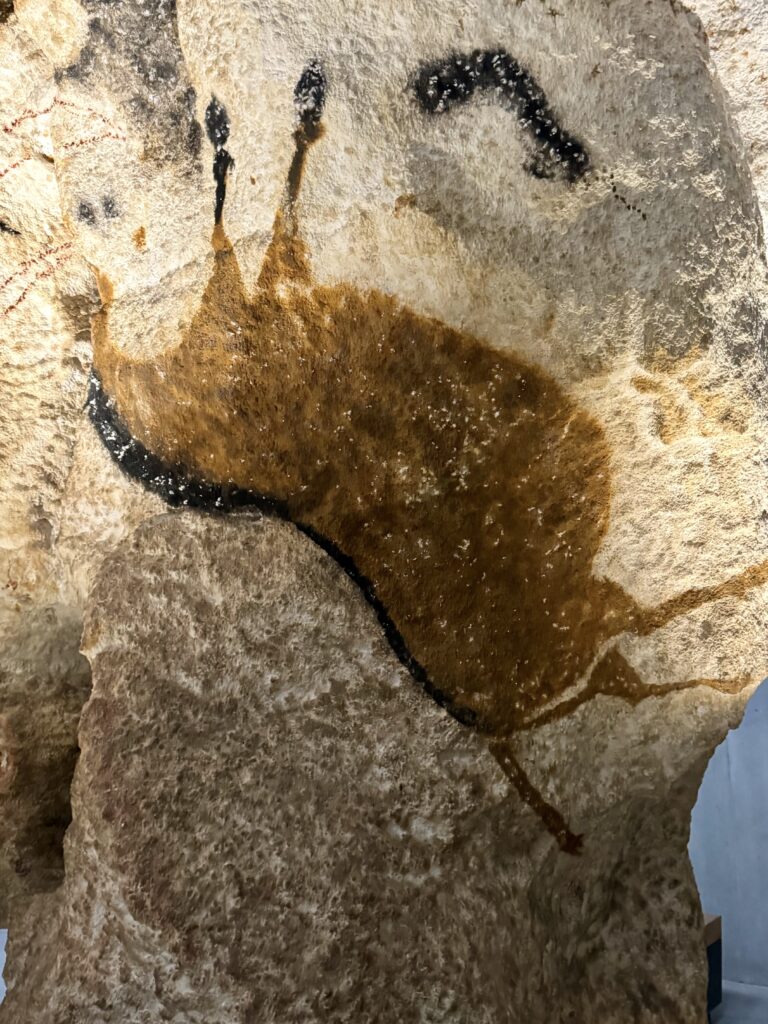
Practical Guide & Tips For Visiting Lascaux IV
Address: Avenue de Lascaux | 24290 MONTIGNAC
Hours: 9:00 am to 7:00 pm
Tickets:
You pay € 22 for the English tour, which you can purchase on the official website.
There’s a free parking lot to drop your car. You can also visit on a guided tour from Bordeaux or a guided tour from Sarlat.
How Long To Spend?
The tour of the replica last about one hour. However, you’ll also want to budget time for the museum exhibits and the theater. So, plan for 2 to 2.5 hours.
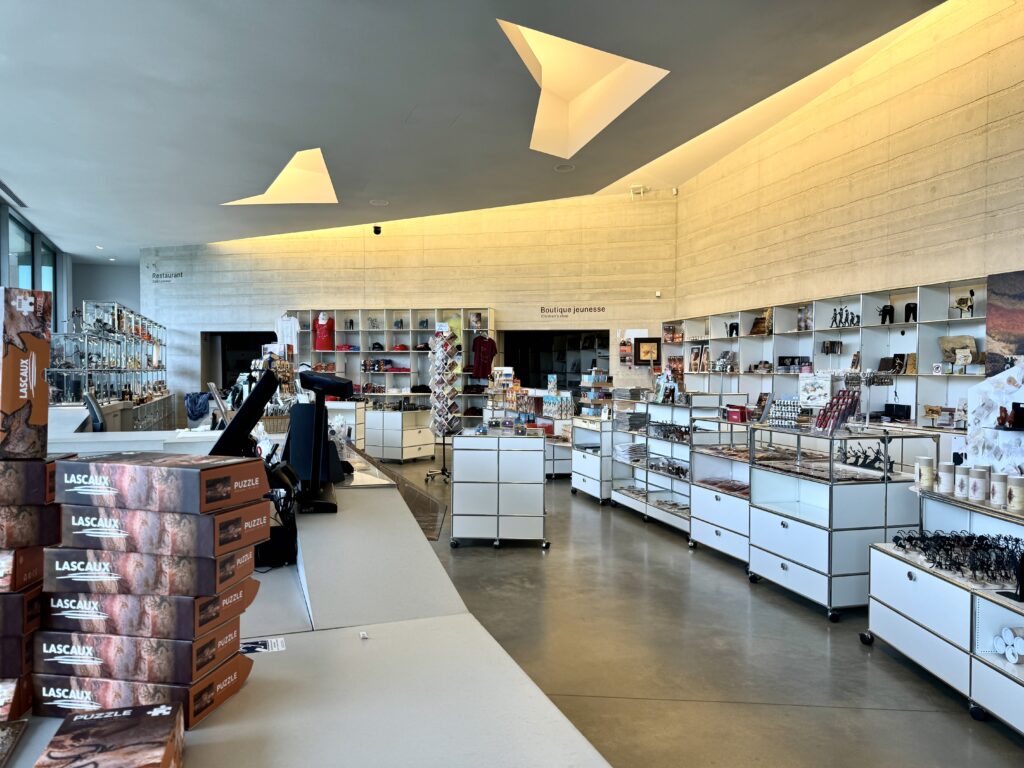
Pro Tips:
It’s fairly dark and cold inside the replica cave, about 55 degrees. So bring a jacket. And give your eyes time to adjust.
The museum has a cafe and shop with ample Lascaux merch. There’s a plethora of toys, puzzles, books, and things for children.
You’ll have to check any largish bags. You stash them in lockers to the left of the gift shop past the bathrooms. You need one euro to open the lockers. But you get it back upon leaving.
What To See Near Lascaux
If you want to see other things while you’re in the area, consider visiting Chateau de Hautefort or the beautiful town of Saint-Amand-de-Coly.
You could also start your day by visiting the Prehistory Museum in Les Eyzies before heading to Lascaux.
It’s a prehistory primer with with over 6 million ancient artifacts. These include tools, weapons, ornaments, and skeletal remains from the Paleolithic era.
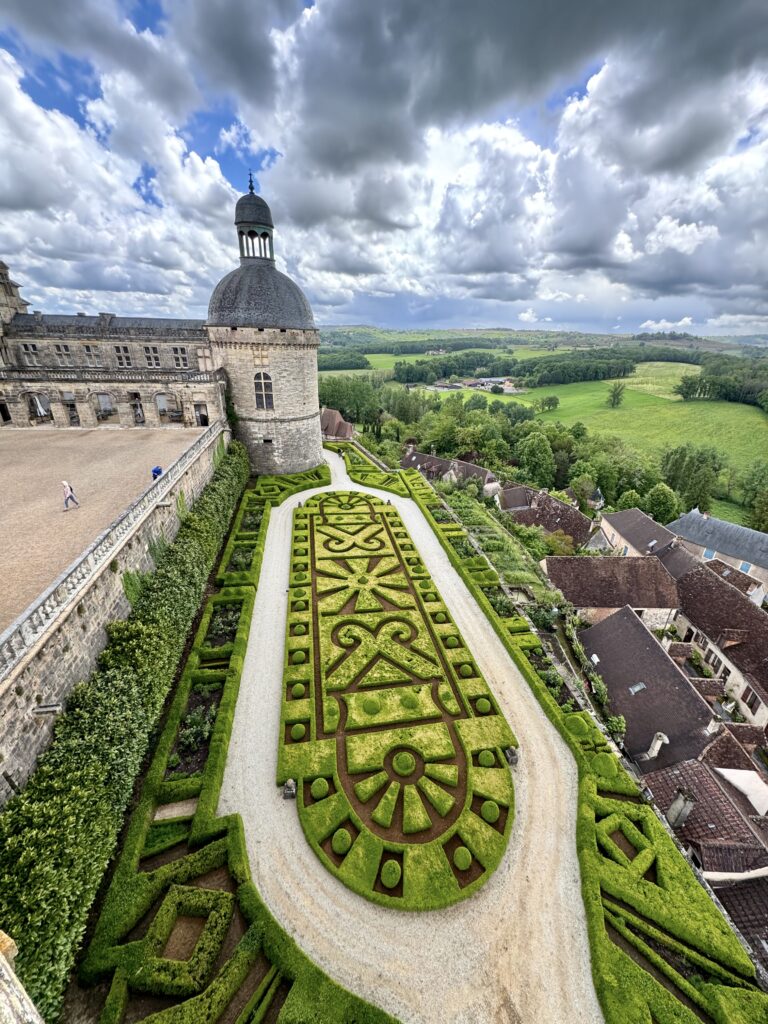
Les Eyzies is also home to the amazing Font-de-Gaume, a smaller prehistoric cave with ancient polychrome paintings. It’s still open to the public, but tickets are hard to come by.
They sell out well in advance, as there is a strict limit on the number of visitors and there are only two English tours daily.
Lascaux II is also still open to the public. But it only has tours in French.
I hope you’ve enjoyed my guide to Lascaux IV. You may enjoy these other southern France travel guides:
- 10 day itinerary for southern France
- Charming hidden gems in Provence
- Hilltop villages of the Luberon Valley
- Historic landmarks in southern France
- Beautiful villages in Occitanie
- Guide to Arles
- Guide to Toulouse
- Guide to Carcassonne
- Guide to Albi
Pin it for later.

